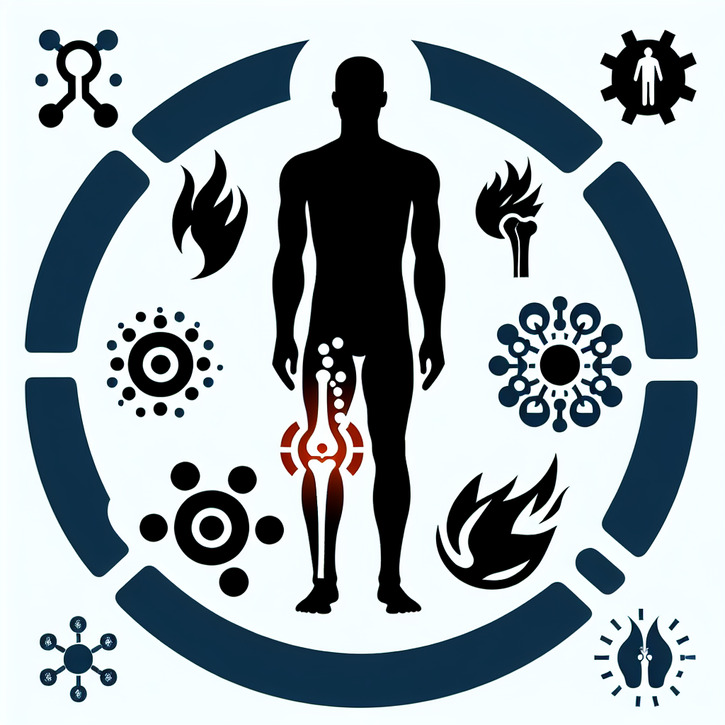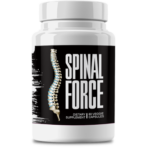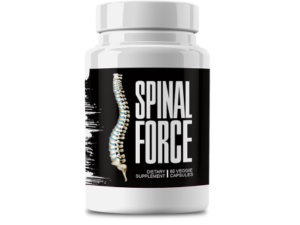This Village-Made Chinese Pain Reliever Eliminates Back And Joint Pain!
Extreme Joint Pain and Inflammation: What You Need to Know for Better Health

Introduction to Extreme Joint Pain
Ever had one of those days when every move feels like a battle? Extreme joint pain is one such battle that countless people face daily, throwing a wrench in their routines and overall happiness. In this article, we’re diving into what this kind of pain really is, how inflammation can make it even worse, and most importantly, how you might spot the early signs that something’s not right. Believe me, I’ve seen how frustrating it can be to live with pain that just won’t quit. Whether you’re just starting to hear about this or you’re already in the trenches, my goal here is to offer an easy-to-read, down-to-earth guide that’s both friendly and backed by experience.
What is Extreme Joint Pain?
So, what exactly is extreme joint pain? Simply put, it’s when your joints hurt so badly that everyday activities become a major challenge. Imagine a sharp, stabbing sensation—or sometimes a dull, nagging ache—that can flare up with the slightest movement or pressure. Many folks tell me it feels like not only a physical burden but an emotional one too, weighing on their overall sense of well-being. It’s important to tell the difference between the normal aches from a long day at work and this kind of serious pain, because catching it early can really change the game for treatment.
How Inflammation Plays a Role
Inflammation is our body’s way of protecting itself, but when it sticks around longer than it should, things can take a turn for the worse. In extreme joint pain cases, this inflammation ramps up the discomfort and kicks off a relentless cycle—pain leading to less movement, which in turn can lead to more pain. Your body releases chemicals to repair any damage, yet sometimes these same chemicals cause swelling and stiffness. Understanding how this delicate balance works can be a real eye-opener, opening up treatment options that span from conventional anti-inflammatory drugs to natural remedies aimed at calming things down.
Recognizing the Early Signs
Let’s talk about spotting the problem before it gets too serious. Early symptoms might be as simple as mild stiffness, a bit of swelling, or discomfort that comes and goes—almost like a warning sign. But if these signs escalate into constant pain or noticeable swelling, that’s your body telling you, “Hey, something’s off here!” Keeping an eye on those small hints can prompt you to seek medical advice sooner, potentially nipping further problems in the bud. Communicating these early alarms with your doctor can really help nail down the right approach to treatment.
Causes and Risk Factors of Extreme Joint Pain
Genetic Predispositions and Environmental Factors
Ever wondered why some people seem almost destined to deal with joint pain? Genetics plays a big part. If arthritis or other joint issues run in your family, you might be more at risk. But there’s more—environmental factors, like pollutants or even certain chemicals around us, can trigger those inflammatory responses we're all too familiar with. It’s a bit like having a recipe for trouble where inherited traits and your surroundings mix together, making your joints react more fiercely even to minor injuries.
Lifestyle Factors and Injury
The way we live our lives can set the stage for joint pain too. High-impact sports, repetitive strain from your job, or even a little injury that didn’t get enough rest can all pave the way for chronic issues. Trust me, I’ve seen how even everyday activities can wear down joints over time—add poor posture or being overweight into the mix, and you’re looking at a recipe for ongoing discomfort. A few tweaks in your daily habits—like switching to lower-impact exercises, being mindful of posture, or simply giving your body time to heal—can really make a difference.
Underlying Health Conditions
Sometimes the problem isn’t just wear and tear; it might be something deeper. Conditions like rheumatoid arthritis, lupus, or gout can directly target your joints, leading to ongoing inflammation and serious pain. These aren’t just minor inconveniences; they can affect your overall health, too. Autoimmune diseases, for example, are when your immune system misfires and attacks your own tissue. For anyone dealing with such issues, collaborating with a healthcare professional is crucial because an early diagnosis can open the door to treatments that tackle both the symptoms and the root causes.
Diagnosing Extreme Joint Pain
Medical History and Symptom Reporting
When it comes to figuring out what’s behind your joint pain, your personal story is key. Detailed conversations with your doctor—about how long you’ve been hurting, when it gets worse, what activities make you feel off—are all essential. Sometimes the tiniest detail, like pain worsening at a certain time of day, can give your doctor the clues they need for a solid diagnosis. Honestly, keeping a little diary of your pain episodes isn’t a bad idea—it can be an invaluable tool in getting the right help.
Imaging and Laboratory Tests
Ever had one of those nerve-wracking scans? Imaging tests like X-rays, MRIs, or CT scans can reveal the hidden story inside your joints. These procedures help doctors see any damage or inflammation that isn’t obvious on the surface. And then there are blood tests, which look for inflammation markers or antibodies that might suggest an autoimmune issue. Putting these results together gives a comprehensive picture and helps shape treatment plans that really target the underlying causes.
The Role of Specialist Examinations
Sometimes, a general check-up isn’t enough, and that’s where specialists come in. Rheumatologists and orthopedists have the expertise to dig deeper into complex joint issues. They perform hands-on exams—checking how far you can move, listening for unusual sounds, and really taking in all your health details. If your symptoms are a bit mysterious or overlapping with other conditions, seeing a specialist can be a game-changer in crafting an effective treatment plan.
Treatment Options for Extreme Joint Pain
Medications and Injections
When joint pain hits hard, medications often become the first line of defense. Whether it’s NSAIDs to calm inflammation, corticosteroids to ease the pain, or even DMARDs for long-term management, these treatments can make a big difference. Sometimes doctors might even opt for injections right into the joint for quick relief. It’s a bit of trial and error to find that perfect mix—what works wonders for one person might not be as effective for another. Working closely with your healthcare provider to fine-tune this approach is really the key.
Physical Therapy and Rehabilitation
Physical therapy isn’t just a buzzword—it’s a cornerstone of managing joint pain. A skilled therapist will design a workout routine just for you, focusing on boosting strength, flexibility, and mobility. These exercises can help reduce stiffness and fortify the muscles around your joints. Think of it as giving your body extra support through tailored activities, be it simple stretching routines or even water aerobics. Many folks find that combining physical therapy with other treatments leads to a marked improvement in how they feel day-to-day.
Exploring Natural and Alternative Remedies
In today’s world, many people are turning to natural and alternative remedies to complement their treatment. From delicious, anti-inflammatory foods to herbal supplements like turmeric and ginger, there’s a growing interest in finding relief without relying solely on medications. Even practices like yoga or meditation can help ease pain and boost overall well-being. While research in this area is always evolving, plenty of individuals swear by these methods. Just a little word of advice: always chat with your doctor before diving headfirst into alternative treatments. It’s all about making sure everything works well together.
Lifestyle Changes to Manage Extreme Joint Pain
Exercise and Mobility Routines
We all know movement is key, but when joint pain is in the mix, low-impact exercises can be a lifesaver. Whether it’s gentle stretching, a brisk walk, or even water aerobics, getting your body moving can really help maintain joint flexibility and muscle strength. The idea isn’t to push through pain but to gradually improve mobility over time. Start small—if a particular activity sparks a little discomfort, adjust accordingly until you find your sweet spot. Sure, it might take a bit of time to get into a routine, but those small wins add up to big improvements in the long run.
Diet and Nutritional Considerations
What we eat can have a surprising impact on joint pain. A diet rich in leafy greens, berries, and omega-3 fatty acids (hello, fish!) is known to combat inflammation and promote joint health. On the flip side, highly processed foods and sugars might just be adding fuel to the fire. Many experts now champion an anti-inflammatory diet as part of a broader pain management plan. Not to mention, maintaining a healthy weight through balanced nutrition takes some of the load off your joints. Pairing nutritious meals with good hydration can be a game-changer in your journey toward less pain.
Stress Management and Sleep Improvement
Ever notice how a stressful day can leave you feeling physically sore? Managing stress is a crucial piece of the puzzle when dealing with joint pain. Techniques like mindfulness, deep breathing, or even just a leisurely walk outdoors can help ease tension and reduce pain flare-ups. And don’t underestimate the power of a good night’s sleep. Creating a calming bedtime routine—think comfortable bedding, a quiet room, and minimal screen time—can do wonders for your body’s recovery. Together, stress relief and proper sleep form a solid foundation for overall pain management.
Preventative Strategies for Extreme Joint Pain
Early Intervention and Regular Screenings
The old saying “an ounce of prevention is worth a pound of cure” really rings true here. Catching the early signs of joint trouble can help you avoid more serious issues down the line. Regular check-ups allow you to spot any warning signals—be it minor stiffness or slight swelling—before they evolve into something more challenging. Staying in touch with your doctor and discussing any new symptoms can lead to early interventions that might include lifestyle tweaks or even preventative treatments.
Weight Management and Joint Protection
We can’t ignore the fact that extra weight puts more strain on your joints. Keeping a healthy weight isn’t just about looking good—it’s about protecting your joints from unnecessary stress. Alongside a balanced diet and regular exercise, simple adjustments like supportive footwear or even braces can help shield your joints from further damage. It’s all about combining smart weight management with practical joint protection strategies to maintain lasting mobility and comfort.
Ergonomic and Posture Adjustments
Have you ever re-arranged your workspace just to feel more comfortable? Small ergonomic changes can make a huge difference when it comes to joint health. Whether you’re at a desk, in the kitchen, or even relaxing at home, ensuring your surroundings support good posture can relieve a lot of pressure on your joints. From standing desks to pillows that offer proper support when you sleep, these adjustments may seem minor, but over time they help reduce the strain on vulnerable joints—making everyday tasks a lot more bearable.
Living with Extreme Joint Pain: Patient Stories and Expert Advice
Real-Life Experiences and Coping Strategies
Sometimes the best lessons come straight from those who’ve walked the path. People living with extreme joint pain often share stories filled with ups, downs, and unexpected victories that remind us all there’s hope. Whether it’s adapting daily routines or discovering unique coping strategies, these personal accounts provide insight and genuine support. There’s something really inspiring about hearing how others navigate the challenges—sometimes even with a touch of humor and resilience—that creates a sense of community and shared understanding.
Expert Recommendations and Future Perspectives
Experts in joint health agree: an integrated approach is the way forward. Combining traditional medical treatments, physical therapy, and lifestyle changes—tailored to each person’s circumstances—is generally the most effective plan. With ongoing research, new insights and innovative treatment options are always on the horizon, promising even better management strategies in the future. So while the journey might be tough sometimes, remember that you’re not alone; there’s a whole team of professionals and fellow sufferers out there, all working towards a future with less pain and a higher quality of life.








